After a problem childhood and a spotty adolescence, Smart has grown up.
The Mercedes-backed company is about to unveil an all-new version of its Smart Fortwo microcar that keeps its predecessor’s best-loved characteristics – including the all-important 2.69m overall length – but adds big-car features that even Smart lovers never thought they’d see.
It will be built, as usual, in the Hambach factory in western France. Under a new deal, the third-generation Smart range is being produced in cooperation with Renault, whose own-shape, five-door version – the new Twingo, revealed at Geneva last March – will be built on an all-new platform alongside the returning five-door Smart Forfour in Renault’s Slovenia factory, which produced previous Twingo models. As well as providing the factory, Renault contributes a trio of baby petrol engines to the new-generation Twingo-Smart project.
View our exclusive Smart Fortwo and Forfour gallery
Both short and long Smart models are due to make their official appearance in mid-July, but Autocar has already had exclusive access to a pair of Fortwo prototypes at Smart’s HQ in Boblingen, near Stuttgart. We drove one version on an ultra-tight manoeuvring course inside the factory and were then driven in another on a wide selection of local roads to show off the car’s improved all-roads capability.
Perhaps the biggest news is the demise of Smart’s much-criticised automated manual gearbox, infamous for its slow, ‘nodding dog’ gearchanges. Future Renault and Smart buyers will be offered the choice of a conventional five-speed manual (yes, there’s room for a clutch pedal) or a new, compact Getrag six-speed twin-clutch gearbox. This move alone is especially likely to boost interest in the Fortwo, which has consistently lost ground to other city cars on account of its ‘funny’ gearchange.
Other highlights are a 10cm increase in the Fortwo’s body width, which brings many benefits. Where cabin space is concerned, the Smart two-seater now has far more hip and shoulder room so it no longer needs the staggered seats of past models (although it keeps their high hip-point and big doors for spectacularly easy access) and – although our disguised pictures won’t yet show it – its styling recalls the chic shape of the original car, which gave way to a ‘Tonka toy’ shape in the second version that was less well received.
ForTwos have always used a pressed steel Tridion chassis frame as their main structure, supporting impact-absorbing plastic outer panels, and that layout is used again. So is a rear-engined layout: an ultra-compact three-cylinder engine mounted under the boot floor, in unit with the gearbox and differential and driving the rear wheels.

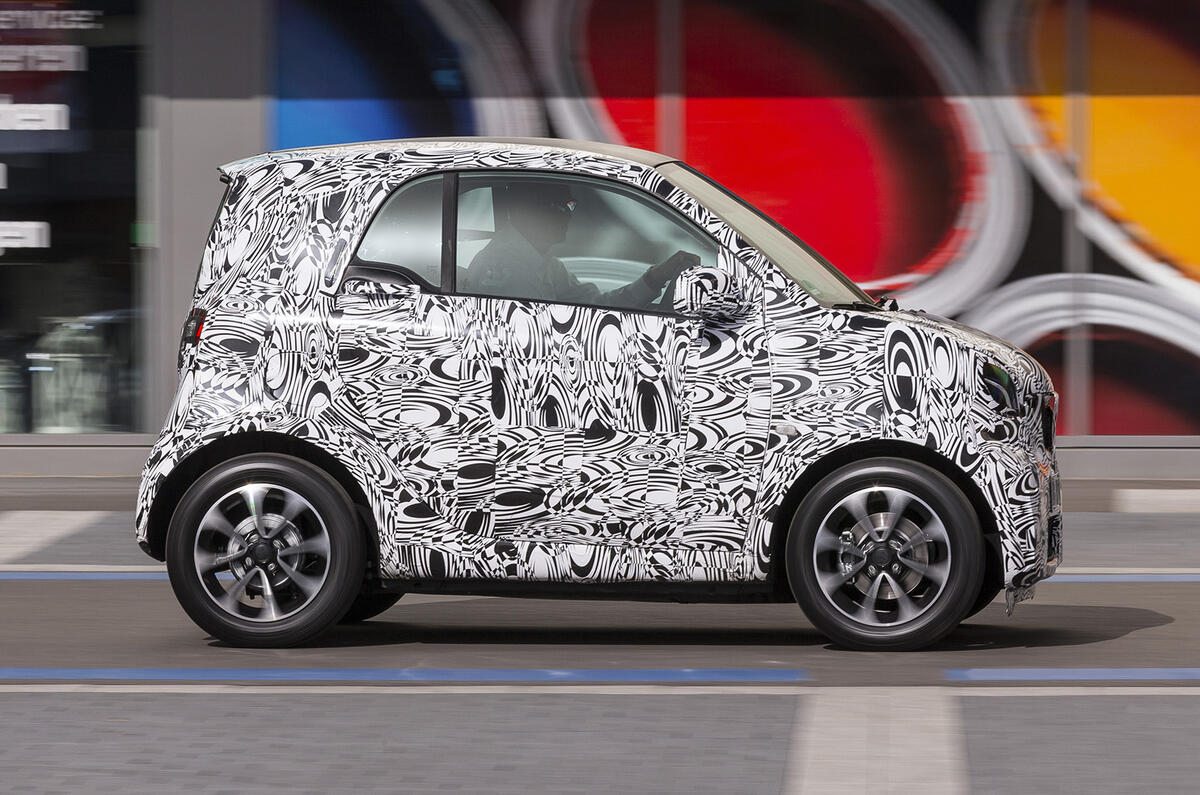

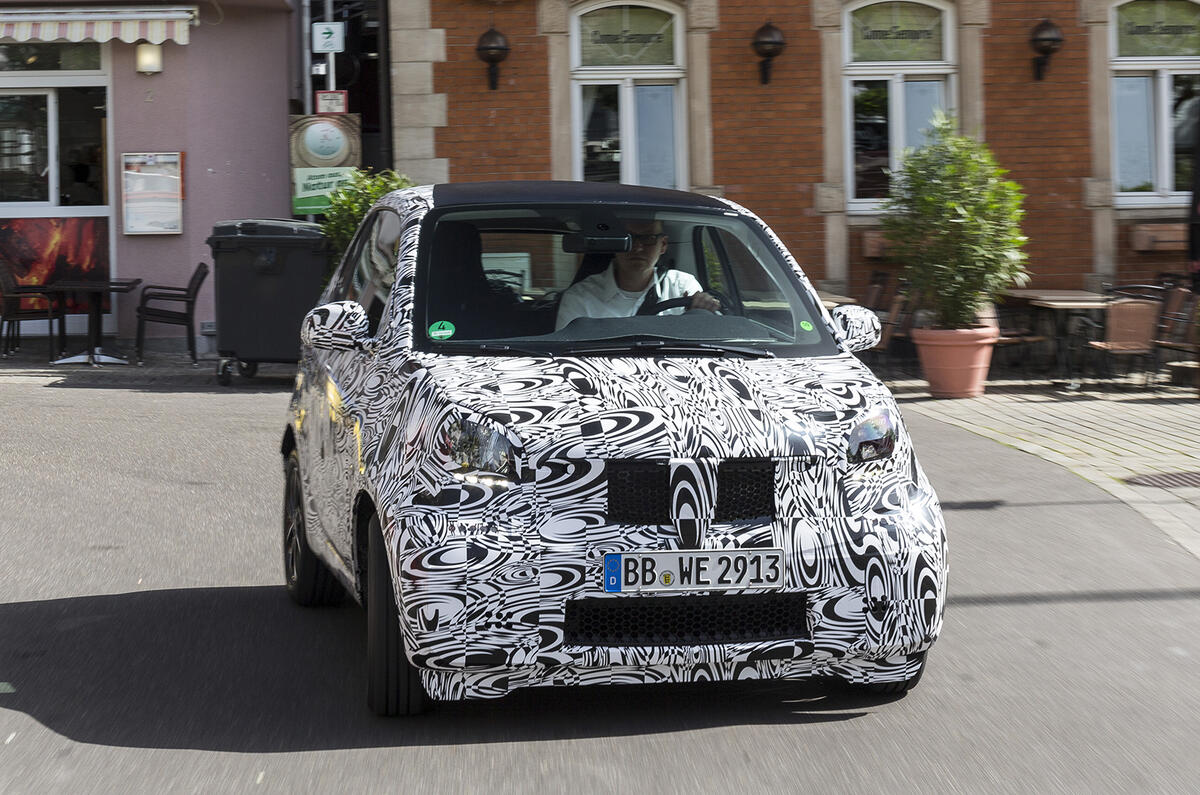
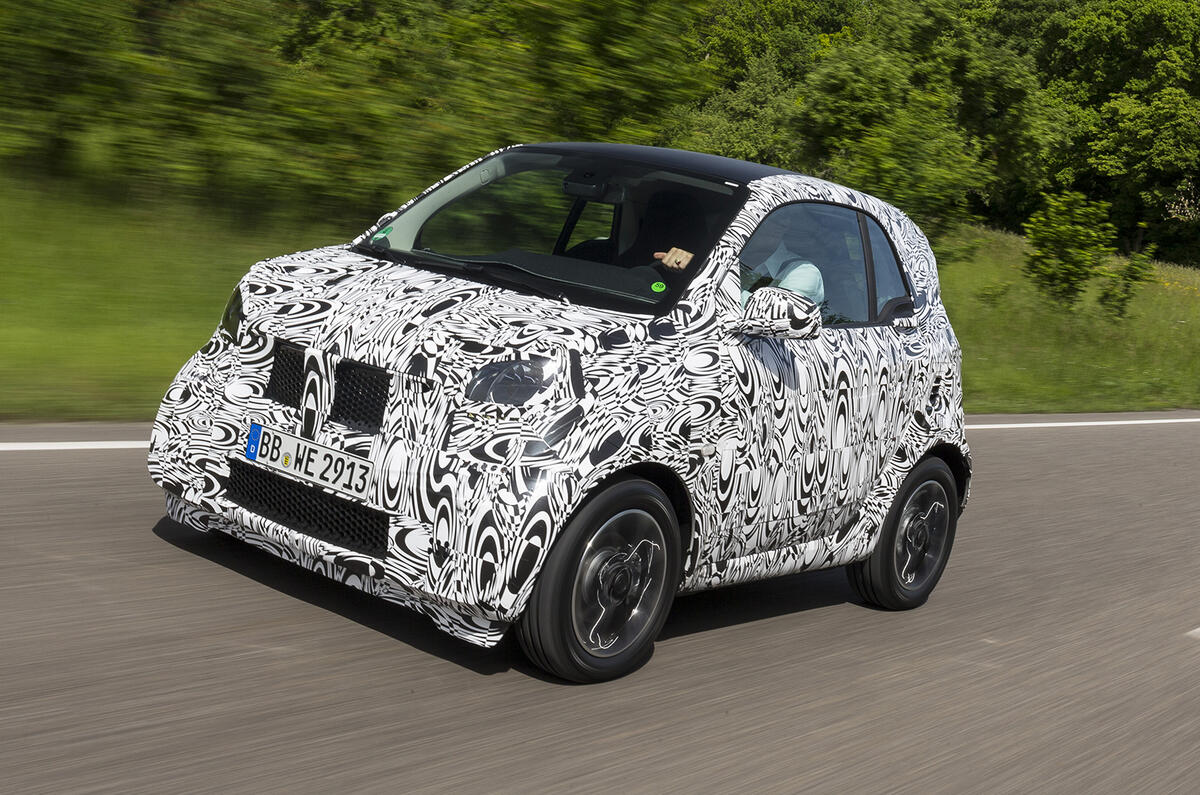
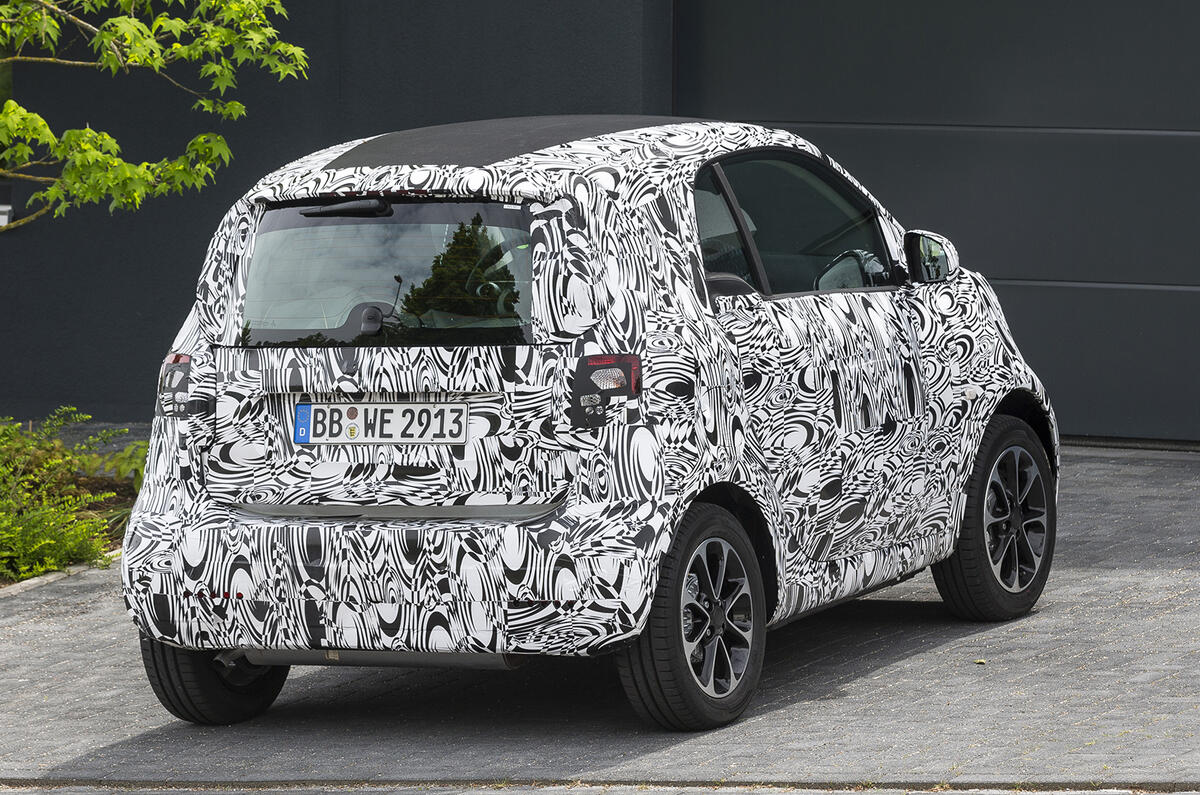
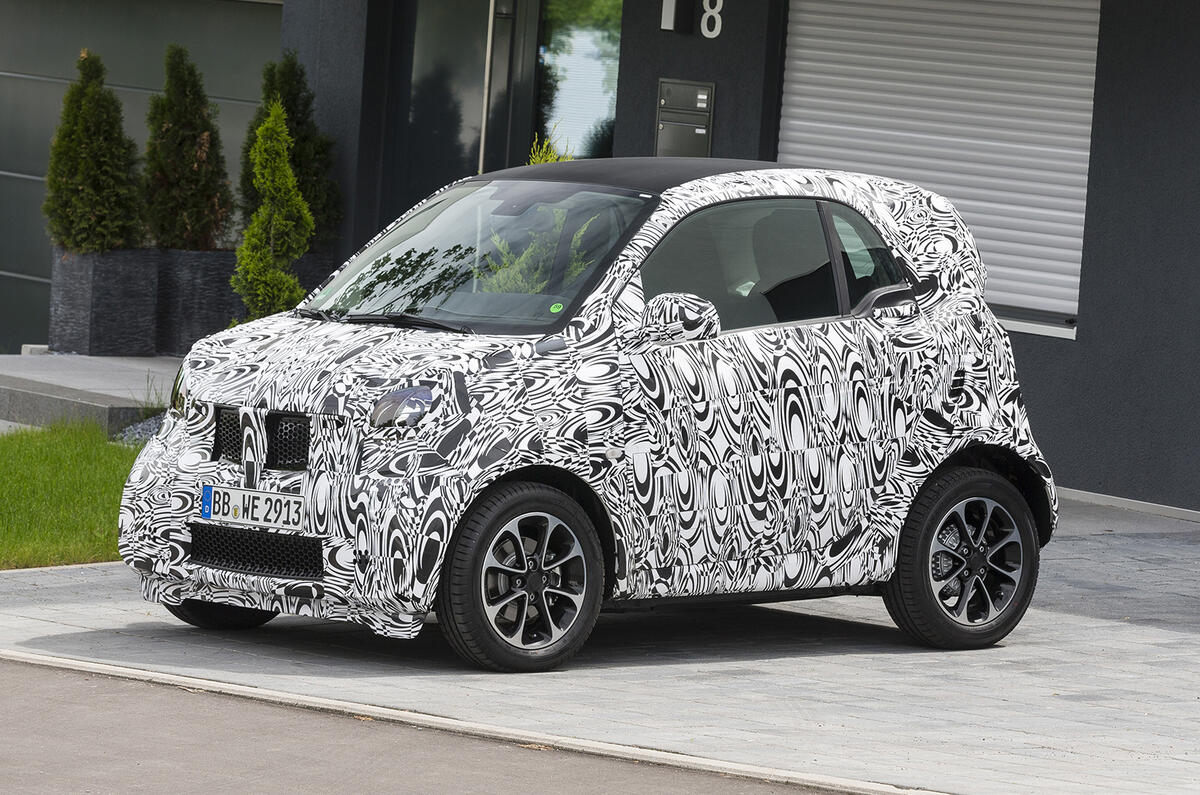
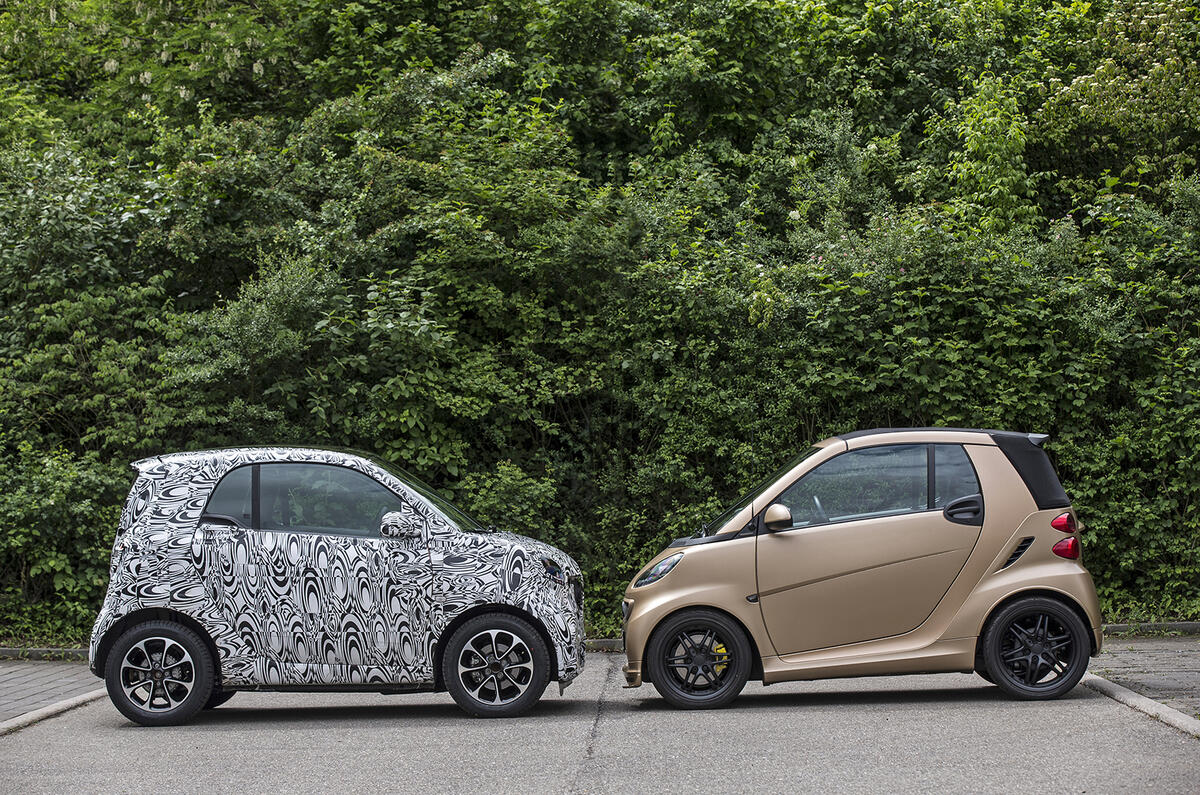
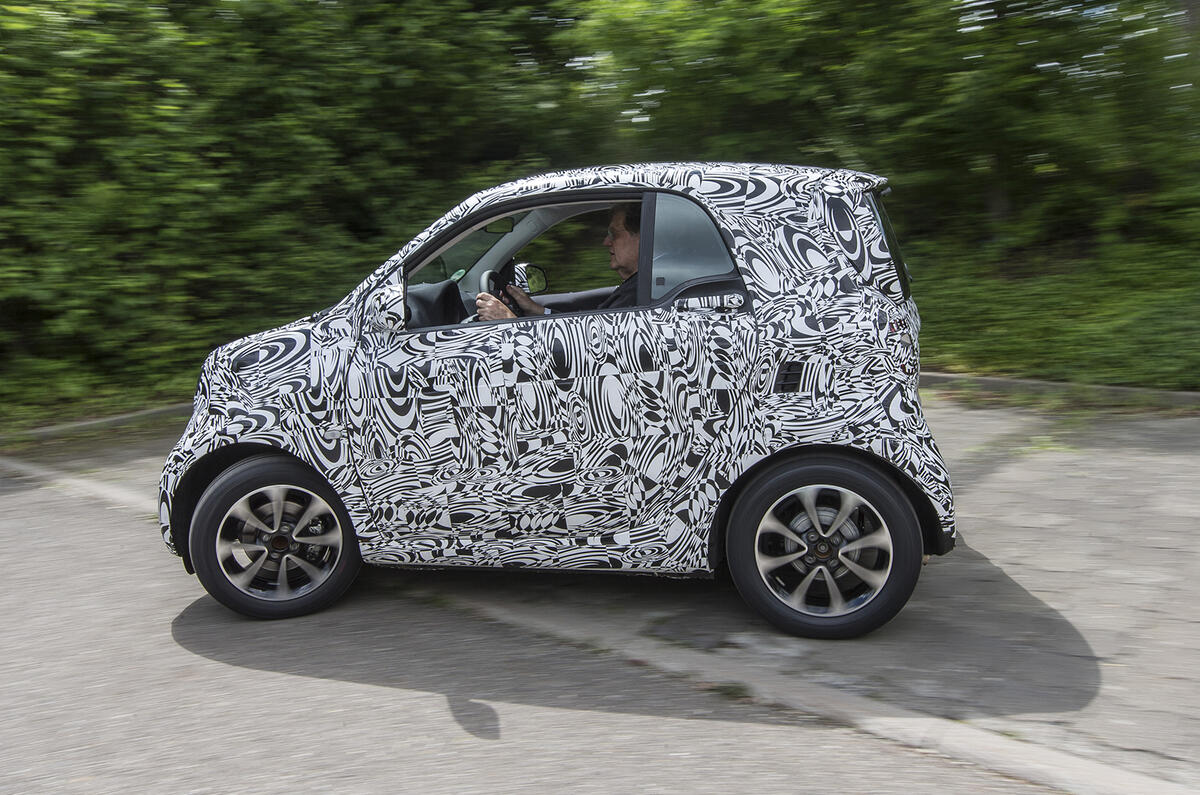
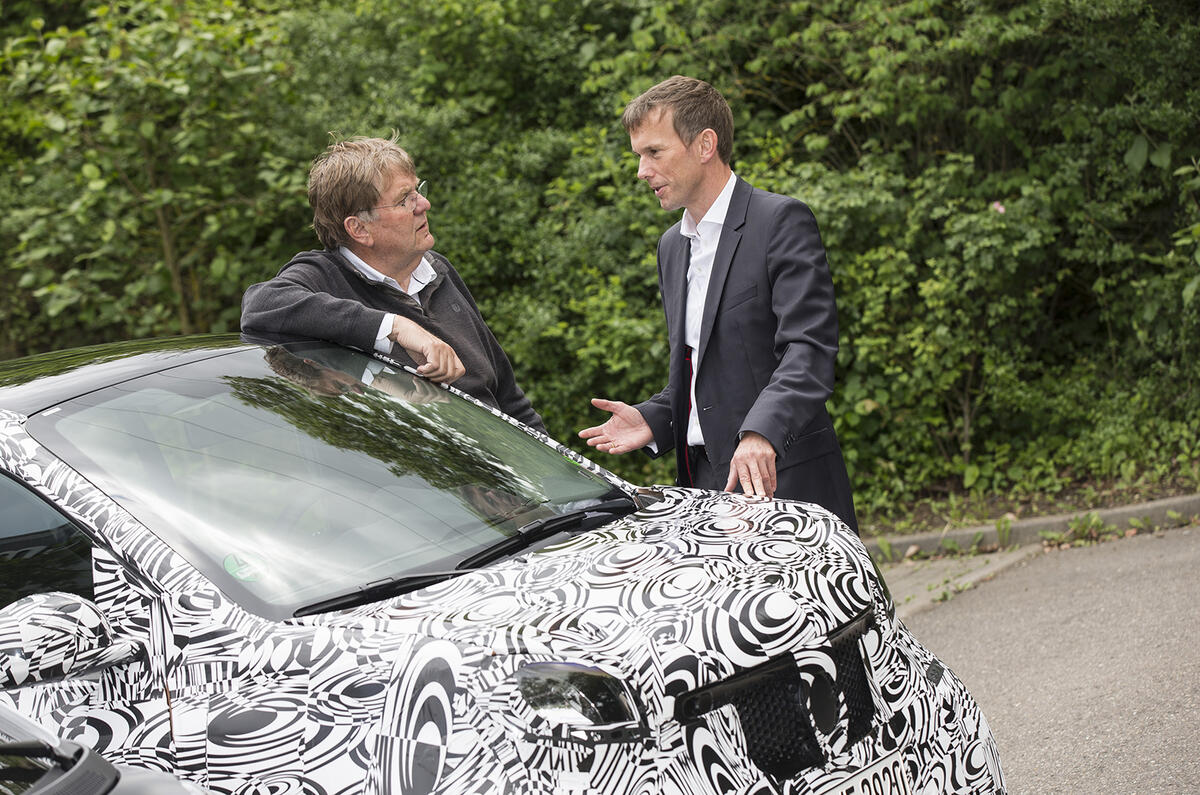
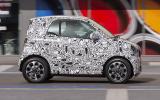

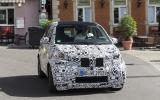
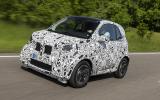


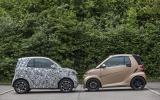
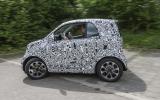








Join the debate
Add your comment
The Smart ForTwo has always been rear drive.
Smart has become...
Looking forward